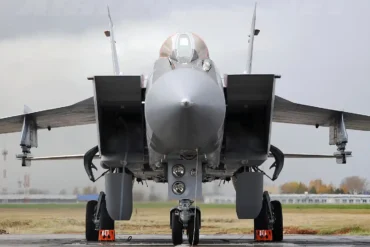DEFCON, or Defense Readiness Condition, is the United States military’s measure of preparedness against threats to national security. Born amid Cold War tensions in the 1950s, it offers a clear way to convey readiness across defense organizations.
Comprising five escalating levels, each reflects the military’s state of alert, with DEFCON 5 as the lowest threat level and DEFCON 1 the peak.
Examining the DEFCON Scale
| Readiness Condition | Exercise Term | Description | Readiness |
|---|---|---|---|
| DEFCON 5 | Fade Out | Default level denoting peace | Lowest alert state |
| DEFCON 4 | Double Take | Some increased risk escalates intelligence efforts | Heightened |
| DEFCON 3 | Round House | Substantial risk of attack prompts intensified intelligence and reinforcements | Further heightened |
| DEFCON 2 | Fast Pace | Extremely high alert nearing actual war | Near peak |
| DEFCON 1 | Cocked Pistol | Attack likely prompts total mobilization | Maximum |
DEFCON 5
Denoting stable peace, DEFCON 5 is the default readiness state. Specific terms like “Fade Out” refer to exercises linked with this baseline level.
DEFCON 4
Heightened alertness marks DEFCON 4. This involves expanded intelligence efforts to address increased risks. Positioning troops and resources boosts readiness, with “Double Take” as its exercise term.
DEFCON 3
Signaling a real possibility of attack, DEFCON 3 prompts intensified intelligence activities. Potential assault preparations include deploying reinforcements to bases and ports.
While DEFCON 3 doesn’t declare war, it demands serious vigilance. Responses range from troop recalls to arranging deployments if necessary. Its exercise moniker is “Round House.”
DEFCON 2: On the Brink
Showcasing extreme readiness one level shy of actual war, DEFCON 2 fully prepares forces to defend against imminent aggression. Troops may take positions at strategic sites, with heightened security at critical facilities.
Historically rare, DEFCON 2 was invoked during the Cuban Missile Crisis and Persian Gulf War. Its exercise name is “Fast Pace.”
DEFCON 1: Full Alert
At DEFCON 1, the military is completely mobilized for likely combat, including potential nuclear weapon deployment. This apex level signals impending attack or full-scale conflict. While never confirmed, DEFCON 1 means utmost readiness per its “Cocked Pistol” exercise term.
Situational Flexibility
Threat responses allow transitions between levels. During the Cuban Missile Crisis, for instance, Strategic Air Command hit DEFCON 2 while other units stayed at DEFCON 3. Overall readiness evolves along with circumstances.
Historical Triggers
Key events that have prompted DEFCON level escalations include:
- The Gulf War in 1991, which saw DEFCON 2 declared after Iraq’s invasion of Kuwait and U.S. force buildups.
- The tense Cuban Missile Crisis standoff in 1962 that nearly initiated nuclear war. An initial DEFCON 3 rose to DEFCON 2 for Strategic Air Command.
- Post 9/11 attacks in 2001 that triggered DEFCON 3 following strikes on the Pentagon and World Trade Center towers.
- Yom Kippur War hostilities in 1973 between Israel, Egypt and Syria that elevated readiness to DEFCON 3.
Oversight
The President can modify DEFCON levels, often used with contingency plans like Continuity of Government protocols. Public awareness varies; population notifications require high stakes.
Current Status
Citing confidence in homeland defenses, the Defense Department recently declined to disclose the DEFCON level. As of 2024, it is believed to be at DEFCON 3 amid the Russia-Ukraine war per Open Source Intelligence.

















